Growing Acanthus Plants from Seed
Acanthus, also called Bear's Breeches, is a native plant in many tropical nations. This perennial plant has several varieties, such as Acanthus Mollis and Acanthus Spinosus. They often give your house beautiful flowers and beneficial leaves for different purposes. Learn how to grow Acanthus from seed here.
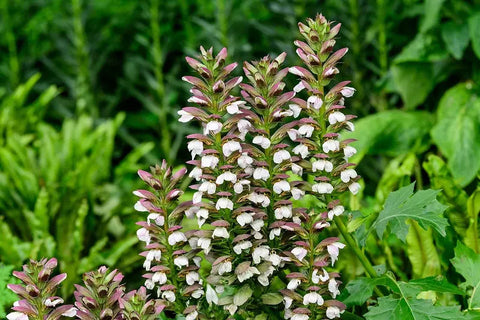
MUST-KNOW GUIDE ON HOW TO GROW ACANTHUS FROM SEED
1.2. Ideal growing season
1.3. Can you grow Acanthus in pots?
1.4. Where to buy Acanthus seed?
2.2. Germination
2.3. Transplanting seedlings
3.2. Soil
3.3. Watering & Feeding
3.4. Pruning
3.5. Pests and Diseases
3.6. Propagation
V. Conclusions
I. Before growing Acanthus plants
It is a beautiful ornamental plant you can grow in your home garden for decoration. You should be aware of the growing conditions before germinating its seeds.
1.1. Growing conditions for Bear's Breeches
It enjoys full sun to partial shade and well-drained, organic-rich soil. Once established, it can survive a wide pH range and is drought tolerant. It's also a tough perennial that thrives in USDA zones 7-10.
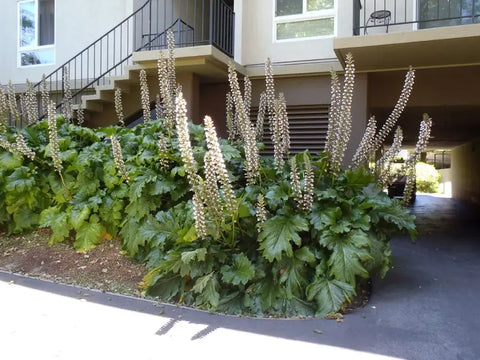
1.2. Ideal growing season
This plant is a perennial variety that grows in most climates. However, it thrives best in the spring and summer months when temperatures are warm with plenty of sunshine. The plant produces its large, showy leaves and spikes of flowers during this season.
Bear's Breeches need well-drained soil and do not tolerate standing water, therefore grow them in a location with good drainage during the rainy season.
1.3. Can you grow Acanthus in pots?
Yes, these plants can be grown in pots as long as the container is large enough to accommodate the plant's root system and provide good drainage. The flower pot should be at least 12 inches deep and wide.
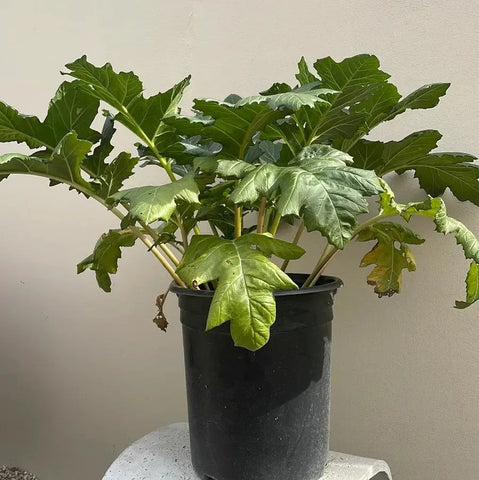
Choose the flower pot with some drainage holes at the bottom. Water the plant regularly and provide it with partial shade to full sunlight.
1.4. Where to buy Acanthus seed?
Bear's breeches seeds can be purchased online or from gardening stores in your neighborhood. You may also want to consult a gardening expert to ensure you choose the suitable seed variety for your climate and soil type. The Rike is a reputable online shop where you can buy various seasonal seeds. You can also chat with the shop for further instructions.

II. How to grow Acanthus from seed?
Growing Bear's breeches can be easy work if you get well-prepared. Therefore, you should prepare essential materials and equipment before starting germination.
2.1. Preparation
Before growing this kind of plant from seed, you will need to prepare the following:
- A container or planter with one or several drainage holes
- High-quality potting soil
- A spray bottle for misting
- A warm place with enough light but indirect sunlight
- A source of water
- A packet of Bear's breeches seeds
- Optional: fertilizer for later growth stages
Follow the instructions on the seed packet to ensure the highest germination rate.
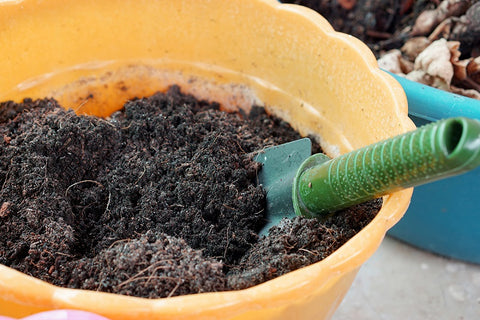
2.2. Germination
You can learn how to start this seed indoors with this instruction. To germinate Acanthus seeds, follow these steps.
- Soak the seeds in lukewarm water for a day before germination.
- Fill a seed tray with seed compost and level off the surface.
- Place the seeds evenly over the compost surface and cover them with a thin manure layer.
- To keep the tray warm and moist, gently wet it and cover it with clear plastic film.
- Place the tray in a warm, bright area (such as a sunny windowsill) where the temperature remains between 68-77°F (20-25°C).
- Once the seeds have sprouted, remove the plastic film and move the tray to a bright place with a slightly lower temperature, maintaining consistent dampness (but not waterlogged soil).
- When the young plants are tall and mature enough, you can transplant the seedlings into individual pots or right into their final growing location.
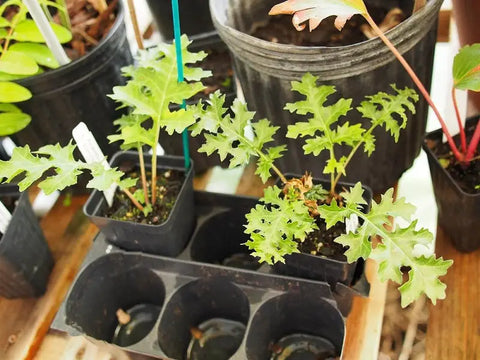
The germination time for acanthus seeds can vary, but it often takes this kind of seed around 2-4 weeks to germinate on average.
2.3. Transplanting seedlings
Here are the steps to transplant a Bear's breeches seedling:
- Choose a location that receives partial shade or full sunlight and has well-draining soil.
- Dig a hole in the soil bed. It must be slightly larger than the root ball of the seedling.
- Carefully remove the seedling from its current pot or location and keep the soil around the roots intact.
- Place the seedling into the new hole and fill in any gaps with the soil.
- Water the seedling thoroughly to help settle the soil and encourage root growth.
- Keep the newly transplanted seedling well-watered for the first few weeks as it adjusts to its new environment.
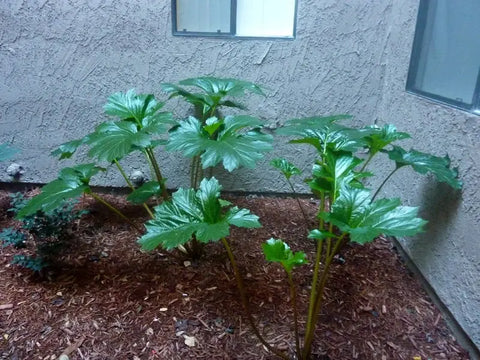
It's best to transplant Bear's breeches seedlings in early spring or fall when the weather is cooler and there is less stress on the plant.
III. How to care for Acanthus plants?
Bear's breeches is a beautiful perennial plant with large, lobed leaves and ornamental flower spikes. Here are some conditions, tips, and rules to help you take care of your ornamental plant.
3.1. Light
These plants prefer partial shade to full sun. It's best to plant them in an area that receives morning sun or filtered sunlight.
3.2. Soil
These flower plants grow well in well-draining soil rich in organic matter such as compost or leaf mold. A pH level between 6.5 to 7.5 is optimal for Acanthus plant growth. Ensure the soil drains well because these plants don't like wet feet.
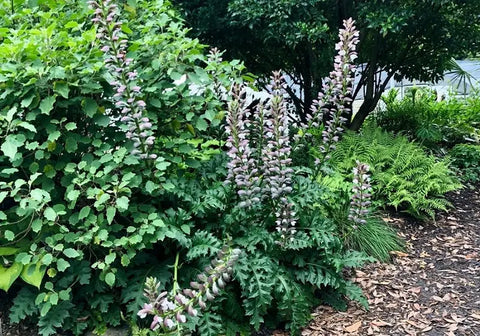
3.3. Watering & Feeding
Water your Bear's breeches regularly during the growing season, but avoid overwatering them. Maintain consistent moisture but avoid the waterlogged soil bed. During winter, reduce watering frequency. Fertilize these plants once a year in early spring using a balanced slow-release fertilizer.
3.4. Pruning
Prune your flower bushes in late winter or early spring before new growth appears. Cut back any dead or damaged branches, and remove any old flower stems.
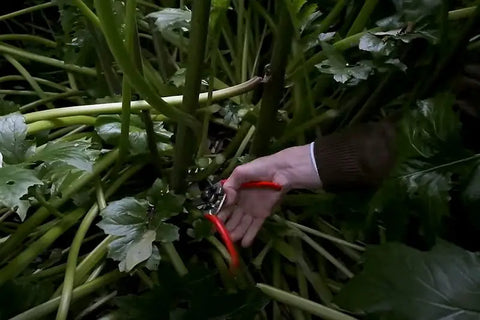
3.5. Pests and Diseases
These plants are generally pest and disease resistant, but they can sometimes be affected by aphids, spider mites, or powdery mildew. Using insecticidal soap or neem oil can help you treat pests safely and effectively.
3.6. Propagation
Gardeners can split and propagate Acanthus plants in the spring or fall. Dig up the plant and carefully separate the root clumps into smaller sections, then replant them at the same depth.
Follow these simple conditions, tips, and rules to care for your Bear's breeches garden, and you'll enjoy its beauty for many years.
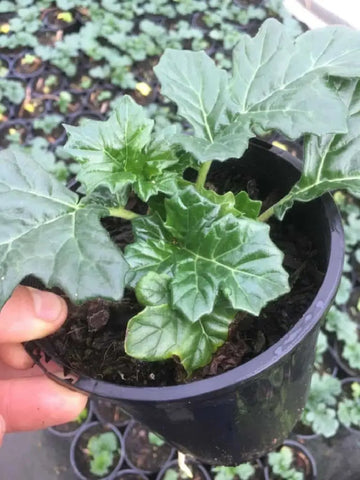
IV. Is Flame Acanthus poisonous to dogs?
No. According to the American Society for the Prevention of Cruelty to Animals (ASPCA), Flame Acanthus is not listed as toxic to dogs or other pets.
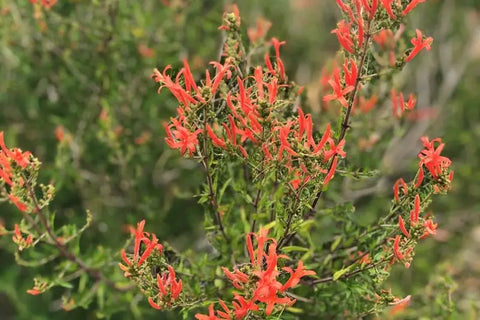
However, it's always a good idea to keep an eye on your pet when they are around any plants, especially those that you're not familiar with.
V. Conclusions
That is how to grow Acanthus from seed and care for this ornamental plant. At the end of the blooming season, you can collect ripe fruits with mature seeds or buy them from an online retailer. The Rike is a reliable herb and seasonal seed retailer that offers buyers a wide range of products for your garden and home.





Leave a comment